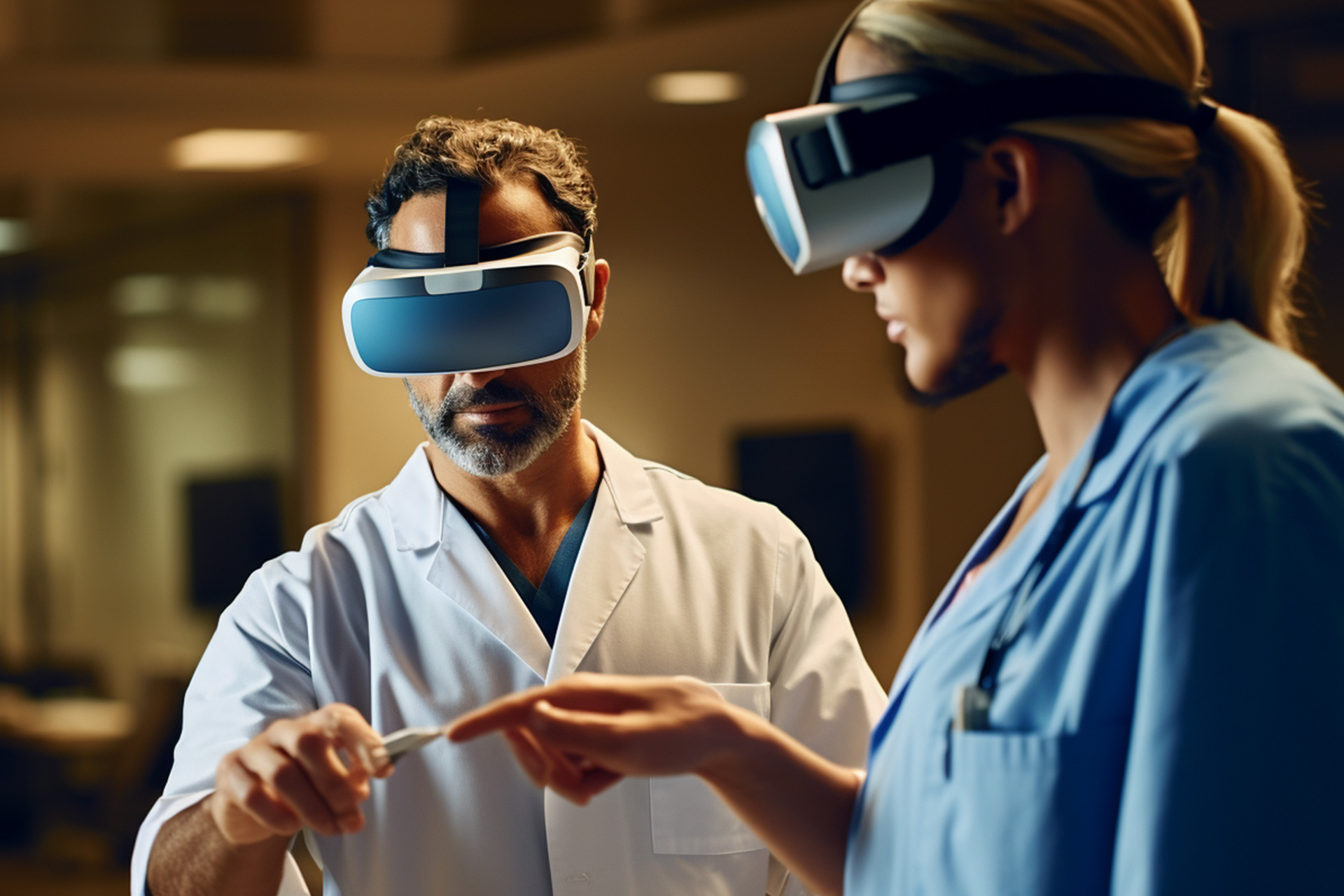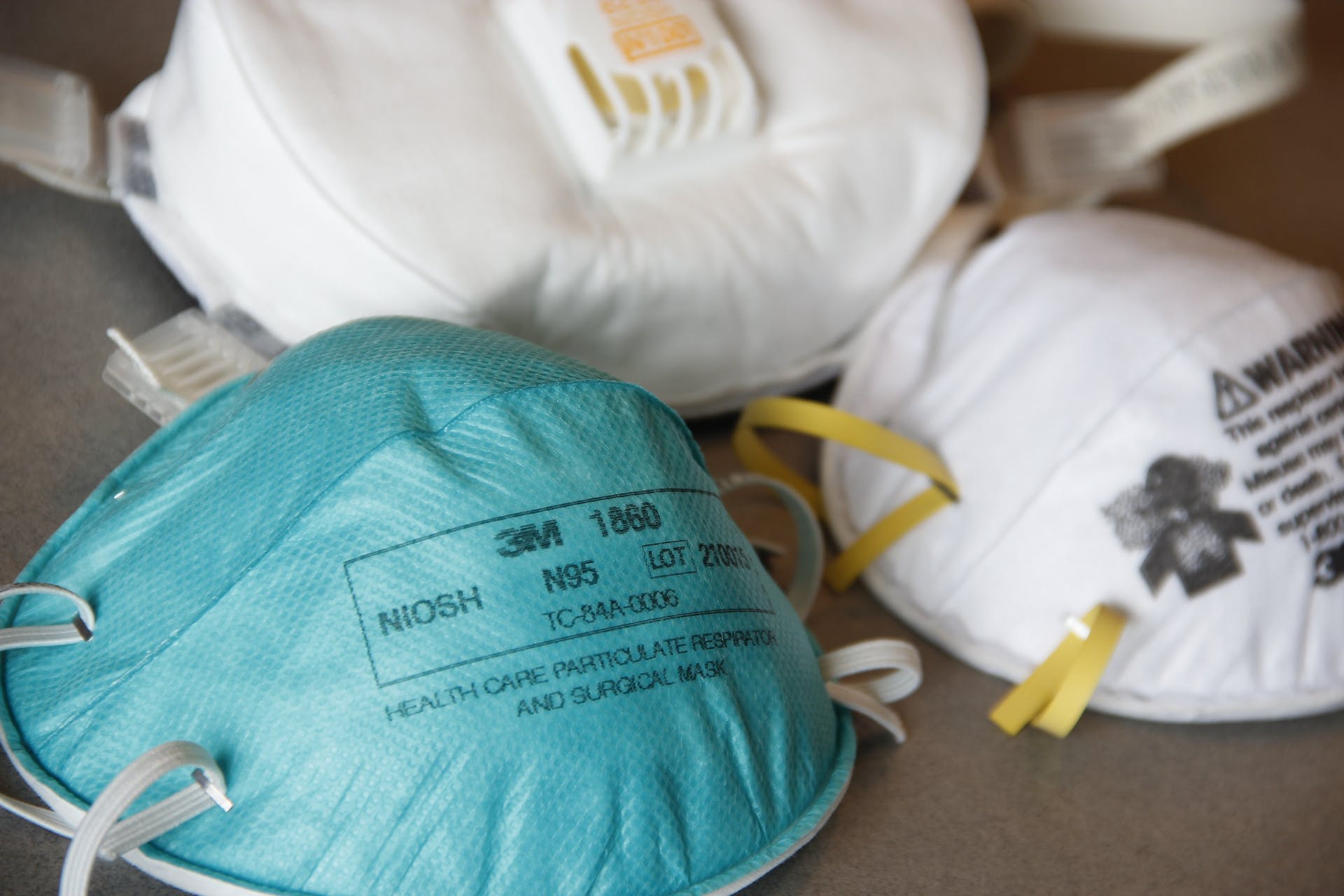Virtual Reality (VR) and Augmented Reality (AR) are part of the broader “Extended Reality (XR)” environment that is ever more present in today’s tech-driven world. Healthcare is a sector that has seen significant recent benefits from both VR and AR.
While both VR and AR provide experiences that are not available in the real world alone and both respond to real-time changes (such as user movement), there are some distinct differences:
- VR is the use of technology to completely immerse users in an alternative computer-generated reality, typically experienced through a full headset.
- AR instead overlays technology onto real-world environments to enhance user experience. It incorporates some of the actual real-world elements into the experience to blend real-world and virtual.
VR is probably best known for its presence in the gaming industry. However, it is increasingly being used in the healthcare industry to assist in a variety of areas. VR is helping to train surgeons, identify early Alzheimer’s and Schizophrenia, heal brain injuries, treat depression, phobias, and PTSD, assist with pain management, and teach social skills to children with autism. Additionally, with the COVID-19 quarantine orders, more people are experiencing VR through therapy in an effort to control stress and anxiety and teach mindfulness and relaxation. VR is a more scalable approach when resources are stretched thin and access to physicians is limited.
AR in healthcare has made recent strides in areas of visualization – both for surgery and to assist healthcare providers in finding patient veins. With AR, doctors are able to project images onto a patient’s body in real-time.
XR, which encompasses both, has been proven to have many advantages, but it comes with its share of challenges as well. Creating a truly immersive experience requires integration of multiple components, all capturing enormous amounts of data points meant to be analyzed and understood together. This requires underlying technologies that can scale rapidly, manage large datasets, and provide significant computing resources on demand. When used in healthcare settings, the reliability and resilience of these supporting functions is critical. Life and death challenges might arise in these areas if there are connectivity issues or other technical limitations.
Additionally, because XR is relatively new, the learning curve is still steep. The availability of people trained to develop, test, and implement spatial computing capabilities is limited. And the challenge is only made worse by the lack of standardization across the technologies being developed. Early adopters often find themselves forced to buy-in to a particular vendor’s overall ecosystem of components and capabilities. This vendor “lock-in” can limit future expansion or integration with other areas.
Without proper education during deployment, the risks of underutilization or errors increase and can lead to increased costs of the technology across the board. The impact of an incorrect usage or design flaw can also result in adverse health outcomes, both for patients and practitioners.
Companies can improve confidence in the success of their XR innovations through a comprehensive digital strategy. Initial experimentation and exploration is often done in sandboxes where existing technical standards and corporate structure don’t hinder the development of innovative ideas and possibilities. Companies that are successful in implementing these innovations will have steps in their innovation process that ensure alignment or adjustments to their overall technology strategy and architecture so that integration and information management capabilities are enhanced. Implementation planning must ensure that the new technology is applied to the existing processes in a way that brings value to patients and providers.
We hope you enjoyed our article! Comment below and share your thoughts on this blog post.




